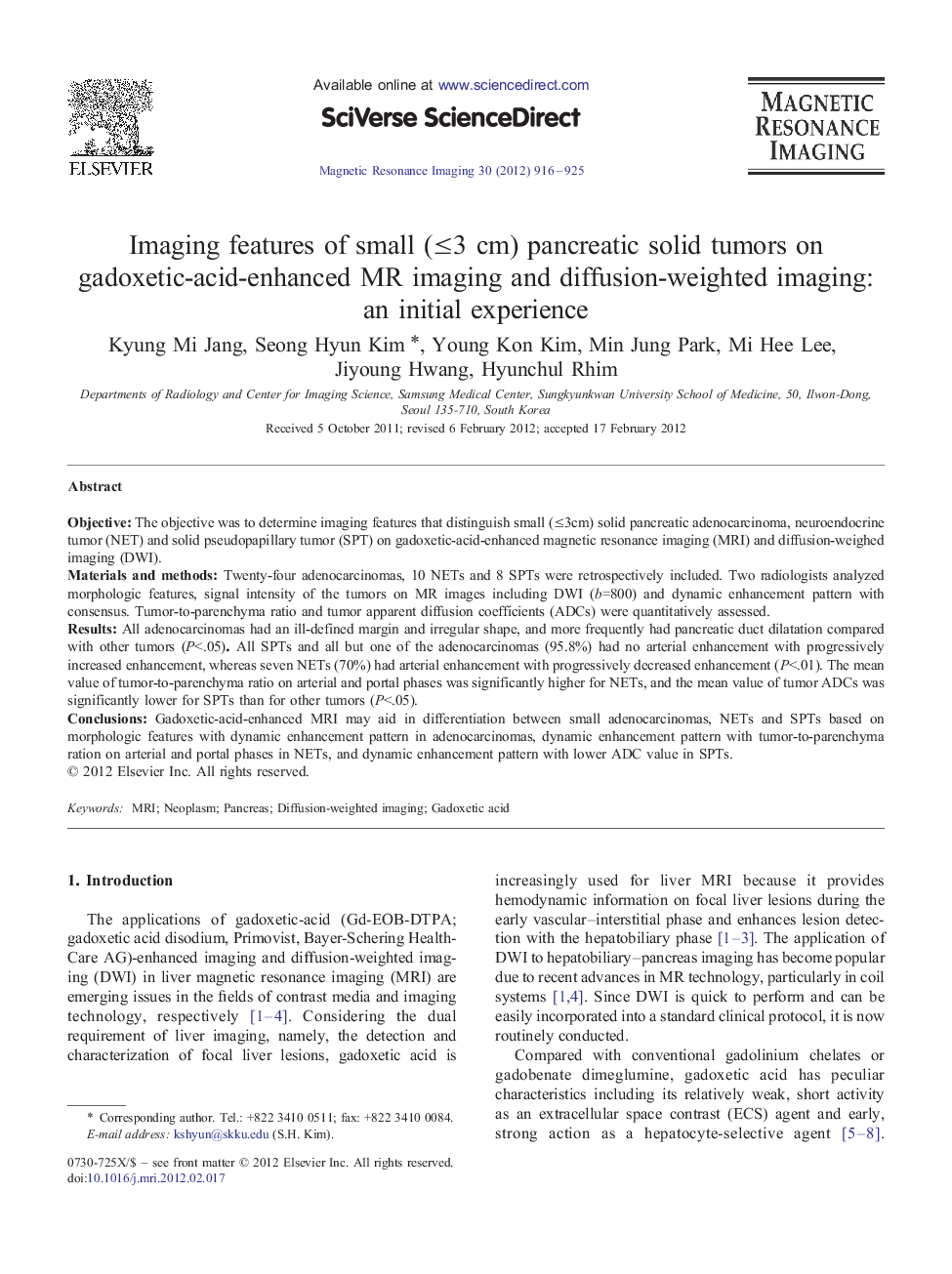| Article ID | Journal | Published Year | Pages | File Type |
|---|---|---|---|---|
| 1806926 | Magnetic Resonance Imaging | 2012 | 10 Pages |
ObjectiveThe objective was to determine imaging features that distinguish small (≤3cm) solid pancreatic adenocarcinoma, neuroendocrine tumor (NET) and solid pseudopapillary tumor (SPT) on gadoxetic-acid-enhanced magnetic resonance imaging (MRI) and diffusion-weighed imaging (DWI).Materials and methodsTwenty-four adenocarcinomas, 10 NETs and 8 SPTs were retrospectively included. Two radiologists analyzed morphologic features, signal intensity of the tumors on MR images including DWI (b=800) and dynamic enhancement pattern with consensus. Tumor-to-parenchyma ratio and tumor apparent diffusion coefficients (ADCs) were quantitatively assessed.ResultsAll adenocarcinomas had an ill-defined margin and irregular shape, and more frequently had pancreatic duct dilatation compared with other tumors (P<.05). All SPTs and all but one of the adenocarcinomas (95.8%) had no arterial enhancement with progressively increased enhancement, whereas seven NETs (70%) had arterial enhancement with progressively decreased enhancement (P<.01). The mean value of tumor-to-parenchyma ratio on arterial and portal phases was significantly higher for NETs, and the mean value of tumor ADCs was significantly lower for SPTs than for other tumors (P<.05).ConclusionsGadoxetic-acid-enhanced MRI may aid in differentiation between small adenocarcinomas, NETs and SPTs based on morphologic features with dynamic enhancement pattern in adenocarcinomas, dynamic enhancement pattern with tumor-to-parenchyma ration on arterial and portal phases in NETs, and dynamic enhancement pattern with lower ADC value in SPTs.
